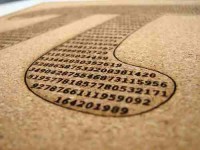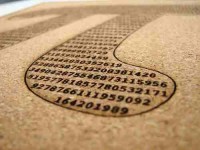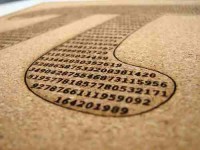
Author Archives: hunjes22


wo – poetry week 8 – Emergence
emerge from within
settle back down to earth
adjusting your eyes
what do you see now?
did you build what dreams may come?
there, sits a tea house
i see it scatter
each piece beautifully diverse
individual
i see it gather
Angles ColLiDe LifTinG MouNtaiNs
conglomeration
i see a tea house
rising out of the chaos
emergence
structure grows freedom
for a box won’t hold it all
would be too heavy
find freedom in form
and form your freedom within
will help you function
for if form fits function
and the function is our lives
form must be infinite

Pi poetry observed – Radiolab-‘Numbers’
This Radiolab was the main inspiration for my field study, along with my personal experience.

Pi poetry observed – ‘Pi-casso’ Art
Pi is for Pi
… or so it would seem. Numbers can be confusing. I can attest to my own experience in high school that math class was nothing short of bewildering and belittling. Many people struggle with the language of math and can develop a strong aversion to it in their adult life. There are, however, an almost infinite variety of other math languages that exist out there, some of them more attuned to the basic instincts we inherit as humans. Even alternate forms of our math system have been developed and used over the ages. Pi is for Pi is an exploration into these ‘intuitive mathematics’ and the origins of our current system. By engaging in interviews, reading texts by and about ‘mathematicians’, listening to radio explorations of the subject, and participating in a Calculated Poetics workshop as a part of the joint endeavor of the As Poetry Recycles Neurons and Methods of Mathematical Physics programs, I hope to discover the ethnomathematic origins of instinctual math and develop methods of teaching it, using core examples from various systems to relay the capabilities that lie hidden within my peers, who tragically may also have been afflicted by the current mathematical education model, recycling their neurons to do math with fun and confidence once again!
Supporting materials include Number Sense by Stanislaus Dehaene, The Magic Mirror of M.C. Escher by Bruno Hurst, Leonardo’s Notebooks edited by H. Anna Suh, The Fractal Geometry of Nature by Benoit Mandelbrot, an interview with Tim Morrissey at the Waldorf Schools Olympia, weekly readings for Calculated Poetics workshop, the Radiolab episode Numbers, and possible interviews with the faculty Bill Arney, Sunshine Campbell, Vaughn Graham, Anita Lenges, and Sherry Walton at The Evergreen State College. others TBA
Weekly log and Field notes
[catlist tags=pi-logs date=yes excerpt=yes excerpt_size=30]
Bachelardian Reverie
[catlist tags=pi-bachelard date=yes excerpt=yes excerpt_size=30]
Poetry
[catlist tags=pi-poetry excerpt=yes excerpt_size=30]
Poetry Observed
(embedded youtube or Vimeo video will go here)
Term Paper Abstract
Read full term paper

Wo – Poetry Observed
During week 9 of the quarter, quarter research papers were due with presentations for the entire class. All quarter, I had researched the history, building techniques, and qualities of roof shingles and tiles that developed in Japan. In this process, I found much beauty and appreciation for the aesthetics of the roof as well as the dedication to quality in the craftsmanship. The methods of framing and dressing the roof was poetry for me that I saw echoing through the ages and into the present moment. Here is the power point presentation and I presented to the class.

Wo – The Meditation of Craftsmanship Term Paper
The Meditation of Craftsmanship
“Flower, bird, wind, moon”
Shadow Writing
In the same way you, the reader, had to unscroll the Kakejiku attached to the top of this paper to see what it said, I invite you to unravel the connections and concepts alluded to within this paper. Because of length requirements, I had to abridge many of the explanations behind concepts that came together to form this paper, so I’ve veiled them with references existing within the paper and citations existing without it. Because of the influence of one of the principle texts, In Praise of Shadows, I think this is quite fitting in conveying the main themes I discovered in my field study. My professor Sarah Williams helped me coin the phrase Shadow Writing to describe this format. Shadows are cast in the paper that veil concepts only to be illuminated later, sometimes by looking back. I am casting a soft light on concepts, leaving them in the shadows while offering candles in the form of implied self reference (allusions to other parts of the text) and citations that you can use to illuminate the inner structure that built this paper. It is a participatory process, and like the Buddha said, “Walk your own path to illuminate the truth.” It is an attempt to more fully capture the fit the abstract concepts I encountered into the structured formula of an academic paper to more fully convey the experience of what these ideas are beyond the limits of an academic paper while still fitting into that formula. And as you’ll see, by embracing structure, the structure creates a pathway that transcends beyond the structure itself. The emergent properties that arise out of strict structure are what this paper is about, and the paper itself is written in a way to allow that. I don’t underestimate your intelligence and would prefer not to cater to your stupidity, so please engage your critical thinking skills and delve into the meanings folded within. So please, metaphorically unroll the scroll to find the full message contained within.
–
To the Japanese people, the ancient proverb on this scroll means, “experience the beauties of nature, and in doing so learn about yourself.” What conversations can we engage in with our surroundings where we learn about them and in turn, they show us something about ourselves? Johann Goethe, the 19th century poet and scientist, asked the same question. He developed a method of inquiry, known as Goethean science, which the author Craig Holdrege has outlined in his methodology of studying the skunk cabbage. This paper focuses on the aspect of “Delicate Empiricism”, a method comprised of seven components on how to engage in conversation with a phenomena you are observing. So what do Buddhism, Chanoyu (the Japanese tea ceremony), Yoga, woodworking, the science of reading, and poetry all have in common? Well my experience with woodworking a year ago led me to the pulling question that there was something in common between Buddhist meditation and the ways of traditional Japanese woodwork. I felt the same way while woodworking that I would while following a Buddhist meditation. I wanted to investigate what it was about these two things that created the phenomena of a similar experience. This is the component of Holdrege’s “Delicate Empiricism” that I call “Starting the Conversation.” As he explains it:
“When I enter into a conversation with nature my interest has been sparked by some experience, my attention has been caught. I’m presented with a riddle and begin asking questions, observing, and pondering. In this way I give the conversation an initial focus.” – Holdrege, 31
My interest had been sparked and I had an initial focus, a leading question that would drive my investigation. I wanted to know about the meditation of craftsmanship. As chance would have it, there was a class on Japanese woodcraft during the time of my field study. Realizing the potential for exploration here, I joined the class and formalized my leading question for an independent field study as part of the program As Poetry Recycle Neurons and posted this project description to our class website:
“The meditation of craftsmanship is a firsthand investigation into the shared qualities of Buddhist and Yoga meditation with traditional Japanese woodcraft and to see how these techniques create a physical space that facilitates an integral sensory experience between mind, body, and spirit, all encompassed in the Chanoyu tea ceremony. The student will show how practicing Japanese woodcraft and participating in the Chanoyu tea ceremony invite meditation that “recycles neurons”, an essential process in further developing critical thinking skills. Working with the Chanoyu: Traditional Japanese Culture and the Way of Tea program, the student will join in the construction of a traditional Japanese tea house on campus and practice Chanoyu tea ceremonies with the class.”
From this you can see that the initial question morphed. As a part of the woodworking course, we were to learn Chanoyu so we could carry out a tea ceremony upon completion of the tea house and to gain a better sense for the essence of the building we were constructing. I realized with woodcraft and Chanoyu both involving rhythmic, purposeful movements. Buddhist meditation prescribes stillness of body and mind. I wanted to know how these activities facilitated meditation even if physical movement was involved, so I decided to include another form of meditation that used physical movement: Yoga. As you can see, the conversation was already developing.
Now that I started the conversation, I had to be open and receptive to the connections that would pop out along the way. I call this “Developing the Conversation”. This is what Holdrege describes in the second and third components of Delicate Empiricism:
“If the focus I bring is too narrow and too rigid, we don’t have a conversation, we have…(one-sided questioning)…. With this awareness present at every moment, the conversation is imbued with an atmosphere of openness… a kind of animated looking forward to things unexpected that may arise.” – Holdrege, 31
What I found through studying the cultural aspect of Chanoyu and the philosophies of Japanese architecture is that Ma was the uniting factor between all these aspects of my question. So at this point it is paramount to convey what Ma is before we continue any further…
–
Take this pause to breathe
Notice the light coming in where you are right now. Notice where the light reaches a little less. Now where the light doesn’t reach at all. Do you see anything there? What is in that darkness, that mystery?
Breathe again
Now look back to the light. Do you feel any difference between the two places? If so, try to find the space where the difference begins. Trace the light away into the darkness and find where the light ends and the darkness begins. This journey may take a long time and you may get to a different place each time. The difference in the objects or the spaces is just that they are there to bring awareness to each other. But when we try to find the boundary between light and dark, it can be illusory. Ironically, this duality serves to show us that there is no separation, that all is one.
Perceive the world as a bubble. Perceive the world as a mirage.
If you see the world in this way you render the Lord of Death powerless.
– The Dhammapada
Ma is… well, Ma can’t really be described. It must be experienced. But think about it this way; Ma is all the blank space on this page surrounding the words. Ma is the pause you take between each sentence. Ma is the gaze between two people’s eyes. Ma is the darkened pupil at the center of those eyes. Ma is the stillness of a pond in the morning. Ma is more of a feeling than it is a thing. Ma is where poetry comes from. It is any space between shadow and light that the imagination fills with meaning. It’s not so important to define Ma as to realize how Ma defines things. Ma breaks down boundaries and sometimes builds them up just to show that they’re not needed.
Essentially, I found that Ma is the experience of meditation. It’s a time to pause and reflect. Ma is essentially what the Buddhists would call Dhamma. In Bikram Yoga it would be Chi. And Ma is a central cultural ideal in Japan. As our Sensei Professor Tomoko in Chanoyu explained to us, it is inherent and instinctual for Japanese people because they grow up with it in their culture and has been a part of their history for so long.
The Chanoyu tea ceremony seeks to bring Ma into the atmosphere of the tea house. Contrary to what I thought, you do not necessarily take things away to make more space for Ma, but you add Ma to the space of your choice. So instead of cleaning a cluttered room, you add Ma to it. Everything about Chanoyu is centered on Ma, from the lighting to decorations to the preparation of tea to the gestures and conversation between guests and host. What’s more is that through the architecture portion, we learned that the tea house itself is built to harness Ma and invite it in to stay.
A Japanese tea house, or Chashitsu, is designed contrary to most European and western style buildings. It’s simple, elegant, and humble components are comprised to frame the space within and around the structure rather than to the structure itself. It is maybe best illustrated in the framework of the house. Over a thousand years has refined carpentry in Japan to have some of the most complex joinery and internal frame structures of any culture on the planet, yet, this elaborate constructions are very purposefully hidden behind walls and ceilings or in the beams themselves, even when it’s not absolutely necessary. This is simply to conceal the “clutter” and provide blank, tranquil spaces for the people who would dwell in the space. It makes an interesting meditation when you are creating these elaborate joinery structures. You may work for hours and days on a hopelessly complex geometric configuration, carving out negative space and tenons to fill them all to be hidden away from sight as long as the building stands. It’s as if you were to paint the Mona Lisa and then cover it in a permanent veil when you were finished. That, in essence, is Ma. For me, this reminded me of the hopeless complexity of nature, the infinite mysteries dwelling within each thing. Our yoga instructor at Hot Yoga in Olympia reminded us of the complexity within our own bodies as we compressed and then stretched different areas with each pose. Anitol, the owner and instructor, said we were creating miniature tourniquets when folding our legs into our chests, where each cell becomes deprived of blood and oxygen, cut off from the rest of the body. It starts into panic mode and then when we release and stretch in the opposite direction, breathing deeply, freshly oxygenated blood rushes in and the cells make the most of it while they can in their panicked state, reaching satiation. I’m not directly controlling that. They do it on their own. I’m unconscious of this whole complex interaction within my body just as I’m unconscious of the complex joinery behind the walls and in the ceiling when I’m in a tea house. Yet, I do know that now and so am conscious of it on a higher level. This ascension is what The Dhammapada refers to as “mindfulness”. It is to be aware of your surroundings including undercurrents and subtleties. This awareness is a key to direct perception of Dhamma, which creates a reverie of what is.
Mindfulness is the path to immortality…
With this understanding, the wise…
Rejoice in mindfulness
– The Dhammapada
This awareness of complexity may seem counter to the stillness sought after with Buddhism and Ma, but it’s that awareness, that mindfulness of the complexity that brings a sense of wonder. You can sit in reverie of what is, allowing your imagination to fully feel and embrace the phenomena you are a part of. You reach that initial state of curiosity, wonder, and openness that began the conversation in the first place. In Gaston Bachelard’s book The Poetics of Reverie, he celebrates another take on value of being in a state of reverie:
“The importance of phenomenological inquiries lies in the complete illumination of the awareness of a subject who is struck with wonder by poetic images… The new born poetic image – a simple image! – thus becomes quite simply an absolute origin, and origin of consciousness. In times of great discoveries, a poetic image can be the seed of a world, the seed of a universe imagined out of a poet’s reverie.” – Bachelard, 1
It can be said that all of traditional Japanese aesthetics, of the tea house, of the tea ceremony, are made to be poetic images. Even the scroll pictured in the beginning of the paper is written as poetry and in a poetic style, the “grass style”, of calligraphy, all to create the atmosphere of reverie for the present moment and being in it. The phrase itself symbolizes the poetic grammar of Japanese. Those four words in the scroll are understood to mean so much more. And it’s not the only example. Jun’ichiro Tanizaki in his book In Praise of Shadows describes his reverie for the shadows and low lighting of traditional Japanese houses, the wonder and admiration that they can create for the people and objects in them as well as the space itself. He even describes his love for a traditional Japanese toilet in which one can sit in peace because of the dark colors and view of nature as opposed to the white tile, brightly lit washrooms of western society. If Dhamma can be said to be reverie and Ma can be said to be Dhamma, then it must be that Ma creates reverie, a poetic image that inspires wonder and appreciation at the complexity of what is. If it is understood that Chi is Dhamma as well, then it must be so that the yoga poses are poetic images that create reverie. Reverie is the meditation that connects all aspects together.
I decided to write a series of 6 haikus each week to convey my reverie and meditations from working with wood, hot yoga, and the Chanoyu ceremony. Many of the ancient tea houses, especially the more extravagant ones of nobility and royalty, were used as spaces to write poetry and music and make art while reflecting on the beauty of the universe. I thought it was fitting to create poetry in a uniquely Japanese style to document my processes and experiences as well. My commentary is alongside the poems in green.
What I learned from this field study, beyond the questions I asked, was that structure is a means to a higher form of freedom. What this whole conversation told me was that any strict, ritualized process will inevitably create emergent properties that operate outside the mode that created them. In the precise, predetermined choreography of the Chanoyu tea ceremony, the mind is free to wander about the mindful beauty that has been put into every aspect of the tea house by the use of Ma. The tea house is only held together by the builders following very specific prescriptions for which joints go where and how they are constructed, which allows the glorious structure to stand and provide a space for this tea ceremony, and furthermore, highlight the nature surrounding it to show how it blends with the landscape with no difference at all between them. The disciplined recipe for sitting quietly and contemplatively during Buddhist meditation while reciting meditations to oneself is a way to reach higher enlightenment and understanding of yourself and the world and the boundaries and connections between the two. Yoga requires strenuous exercise to put yourself into compromising positions that ultimately build further connections in the body and in the heart and mind as well. Even to the haiku I wrote for this assignment; I don’t typically write using form, preferring freeform. I found in this exercise though, that the limits of the structure made me think more thoroughly about the words and phrases, finding ones that more accurately portrayed the feeling of what I had learned more so than what I think freeform could’ve done. So after finding out what the meditation of craftsmanship is, it left me with this meditation to think about as I craft my future into limitless shape.

Wo poetry week 7 – Meditation
Meditation
It moves slowly through
eye of the eye seeing you
Blank stares, darkened blue
If thoughts are the flames
casting shadows in our lives
embrace the darkness
Flickering light beams
still pass through shadows of night
what dreams now take flight
tourniquet yourself
release the tension inside
fresh blood rushes in
oxygen breathes flame
and from nothing comes something
from nothing, something
Morning sun brings dew
things anew, things anew here
morning sun brings dew

Wo week 7
February 17th – February 23rd
10 hours – in shop
8 hours – in class
6 hours – reading the Dhammapada, In Praise of Shadows, What Is Japanese Architecture?, Tea in Japan, Reading in the Brain, Japan: Culture of Wood
3 hours – hot yoga
This week found a busy assortment of assignments for the Chanoyu program. A mid-quarter response paper to the book In Praise of Shadows by Jun-ichiro Tanizaki was due on Wednesday with a whole class seminar on the text. Discussions centered around what purpose the use of shadows in traditional Japanese dwellings served, and tied in with our discussions on Ma. In Buddhism, the idea of emptiness encircles one of the founding principles guiding Buddhist meditation. Though this idea is not elaborated upon in the Dhammapada, it can be found in the Heart Sutra of Mahayana Buddhism, and is integral to many of the thought experiments within the Dhammapada. In Praise of Shadows highlights (no irony intended) the role and development involving the use of low lighting, subtle shading, and deep shadows up until the introduction of electrical lighting systems at the turn of the 20th century in Japan. The essoteric effect created by shadows invites mystery and creation of interpretation by the viewer through the imagination. That is to say, shadows allow someone to draw their own lines around boundaries as well as dissolve them, allowing creation through imagination of what actually exists around them. Lights and objects serve to highlight the shadows, and the shadows in turn serve to highlight the objects. This, in some ways, is the essence of Ma. Ma is essentially what the Buddhists would call Dhamma. So the use of shadows can be said to induce an awareness of Dhamma.
“Perceive the world as a bubble. Perceive the world as a mirage.” Dhammapada, 47
This week began my sessions of Hot Yoga at the Hog Yoga studio on 4th Ave, Eastside. It consists of an hour and a half workout containing various yoga poses of the Bikram persuasion in a room heated to about 110 degrees Fahrenheit. Parallels between woodworking became apparent immediately. Upon entering, the students are briefed on the foundations of proper practice. Anitol (the owner and instructor) professed to us earnestly that “it is about the practice, not the product.” Daryl Morgan (the woodshop teacher) expressed the same sentiment in his introduction to traditional Japanese hand working techniques. In each, you spend time honing the technique to the best of your ability, striving to do better than you did the day before. One difference I could infer is that with woodworking, the product often supports their economic livelihood, and so relies on the quality of the product much more. But the sentiment remains that one can never fully master the techniques because you can always do better than you did before and therein lies the joy of practicing. In my first yoga sessions, I was unbalanced and fatigued. It reminded me of first using a Japanese saw as it wobbled and shook as i tried to saw a straight line. My arms also became tired after hammering and sawing for a time. I anticipate reaching comfort within the yoga sessions as my technique and confidence with the Japanese tools improved. Even by my second yoga session, I had more comfort with the routine. As I became more confident with Japanese tools, my mind became less focused on immediately what was in front of me. It became intuitive and my mind would wonder to other thoughts or feelings almost unconsciously as I still engaged the woodwork. Anitol preaches this as one of the values of yogic meditation; that your mind will clear and unconscious awareness pervades you. Thoughts streams carry themselves to completion without any effort on your part. It’s a very therapeutic process.
This week we also finished the shoji screen my group had been working on and it is now ready for use in our mock tea house that we set up in the Sem buildings. In class we continued to practice napkin folding and tea preparation. These somatic exercises also remind me of yoga. There is a very particular and precise way of moving, and it is through concentrating hard on carrying out these movements that the moment of meditation comes. In Bhuddism, it is not somatic but internal, yet still with an emphasis on focus. It is through the focus that calmness and clarity comes. The emotional and spiritual effect of the tea meditation, yoga, or tea ceremony come through.

Wo week 6
February 10th to 16th
4 hours – in shop
8 hours – in class learning tea prep and drinking
3 hours – reading Dhammapada, Ma (Insterstice) and Rubble, Ma: Space and Time, In Praise of Shadows , The Poetics of Reverie
This week found less time in the studio but more time investigating Japanese aesthetics. Both the reading on Ma, the Japanese concept of space in between things (to put it simply) introduced us to the existential background of framing negative space. We also watched a movie by the author of both articles, Arata Isozaki, that portrays the idea of Ma with a continuous looping side view of a Japanese stone garden. We had a very long, good seminar on how we, as westerners, can define Ma, since it isn’t intrinsically tought in our culture. Professor Tomoko told us about growing with that as a Japanese sensibility. She said it was the pauses you take in speech, the steps you take when going to work, or school, or just walking and thinking. She said it was difficult to have conversations when she first reached the United States because people would jump in with their words when she hadn’t finished speaking yet, but was just taking a pause. She also related it to the idea of Fung Shue, more popular in western culture. Someone stated how it is like having a cluttered room, and instead of taking away objects, you just add more Ma to clean it up. What we concluded collectively is that Ma, whatever it is, serves to show us that time is fluid, not linear, and that the boundaries we experience are merely constructions of perception. I’ve attached the seminar paper I wrote for that session.
.Ma relates to Japanese architecture in that it is more about framing space than creating it. There is a goal to reach fluidity between nature surrounding you and the structure itself. Where in ancient Roman and greek architecture, you can see massive ornate columns and ceilings, a Japanese tea house has simple, elegant posts around the edges. Furthermore, the complex joinery and latice work that holds the ceiling and walls is hidden behind a simple wall or ceiling. The complexity is humbly hidden away to give a seemless, timeless, and floating feeling to the rooms. That is the closest way to express Ma with the architecture. In decorating, low lights that cast shadows on the sparce objects within also imbibe and invite a feeling of Ma.
This is in line with the Buddhist idea of nothingness, that at the core of all things is nothingness, and from this void, all life sprouts and someday returns to sprout again, yet we are all connected to it always.
Formal construction of the tea house began on Thursday. We took the rough milled beams and cut them to the working lengths we will use in the tea house. We also began creating the templates that we will follow for carving the joints. I didn’t have much to do this day since I am primarily on the joinery and landscaping team, so I helped in laying down a full scale blueprint of the tea house on the shop floor with tape. It was ironic in constructing it because it was the most hollow thing we’ve made yet, so in a way, captured the Ma of the tea house even more than the tea house will. But I have a feeling that when the tea house is finished, the physical objects will serve to highlight the Ma even better. We also finished our groups shoji screen to be used for our practice ceremonies and eventually placed in the finished tea house. I will post a picture of the finished shoji.
Next week I will began explorations into Yoga and the tea cermony and Yoga and woodworking.



